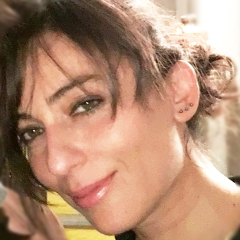Afferenza
Ricevimento e Altre Informazioni
Lunedì 10:30 - 12:30
Didattica
CV
Pubblicazioni
Ricerca
Il tema comune delle ricerche della Dott.sa Silvia Garavaglia è l’analisi della relazione tra struttura e funzione degli enzimi. La biologia strutturale rappresenta il cuore delle ricerche ed è integrata con un’approfondita analisi della biochimica e della cinetica enzimatica. Queste ricerche mirano inoltre a sviluppare saggi adatti a procedure di “’high-throughput screenings” in vitro e all’individuazione di inibitori enzimatici attraverso metodiche in- silico e in particolare di disegno razionale guidato dai dati strutturali.
La principale linea di ricerca attiva, su cui Silvia Garavaglia ha lavorato con continuità sin dal’inizio della sua carriera di ricerca scientifica, è relativa alla biochimica ed enzimologia dell’omeostasi del NAD(P) in differenti organismi in un quadro evolutivo. In questo contesto sono oggetto di studi biochimico-strutturali molti degli enzimi coinvolti nel metabolismo del NAD(P) nei batteri, in particolare Mycobacterium tuberculosis e nell’uomo, in processi patologici quali cancro, neurodegenerazione e nell’interazione ospite-patogeno in malaria.
Una seconda linea di ricerca attiva riguarda lo studio biochimico strutturale di un enzima che utilizza il NAD+. L’Aldeide Deidrogenasi 1A3 è una retinaldeide ad azione detossificante che recenti studi hanno visto essere sovraespressa nelle CSCs del neuroblastoma. L'obiettivo di questo progetto è quello di sintetizzare substrati processabili dall’enzima, disegnati sulla base della struttura cristallografica. Le molecole dovranno risultare selettive per il target ed essere fluorescenti. Le molecole che rispondono a questa descrizione saranno testate per efficacia e sensibilità nel tracciare cellule HGG in vari tipi di campioni biologici.
The common theme of Dott.sa
Silvia Garavaglia researchs, is the analysis of relationship between the
enzymes structure and function. Structural biology is the heart of the research
and it is integrated with an in-depth analysis of biochemistry and enzyme
kinetics. These searches are also intended to develop assays suitable for
procedures of ''high-throughput screenings " in vitro, and to the
identification of enzyme inhibitors through in- silico methods and in
particular of rational design driven by the structural data.
The main line of research
active, which Silvia Garavaglia has worked steadily since the beginning of her
scientific research career, is on the biochemistry and enzymology of NAD (P)
homeostasis in different organisms in an evolutionary framework. In this
context, the subject of biochemical and structural studies, are many of the
enzymes involved in the NAD (P) metabolism in bacteria, in particular Mycobacterium tuberculosis, in humans
and, in pathological processes such as cancer, neurodegeneration and
host-pathogen interaction in malaria.
A second line of research concerns the structural and biochemical studies of an enzyme which uses NAD+. The aldehyde dehydrogenase 1A3 is a retinaldehyde with a detoxifying action, that recent studies have seen to be over-expressed in neuroblastoma CSCs. The goal of this project is to synthesize compound that are able to bind the isoenzyme, designed on the basis of crystallographic structure. The selected molecules must be specific for the target and fluorescent. The molecules that fit this description will be tested for effectiveness and sensitivity in tracing HGG cells in various types of biological samples.

